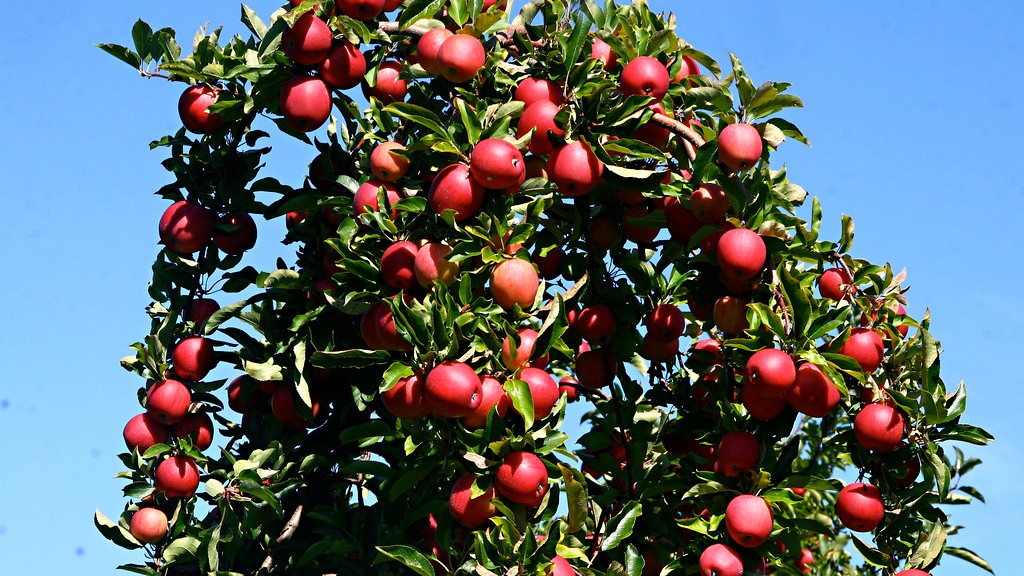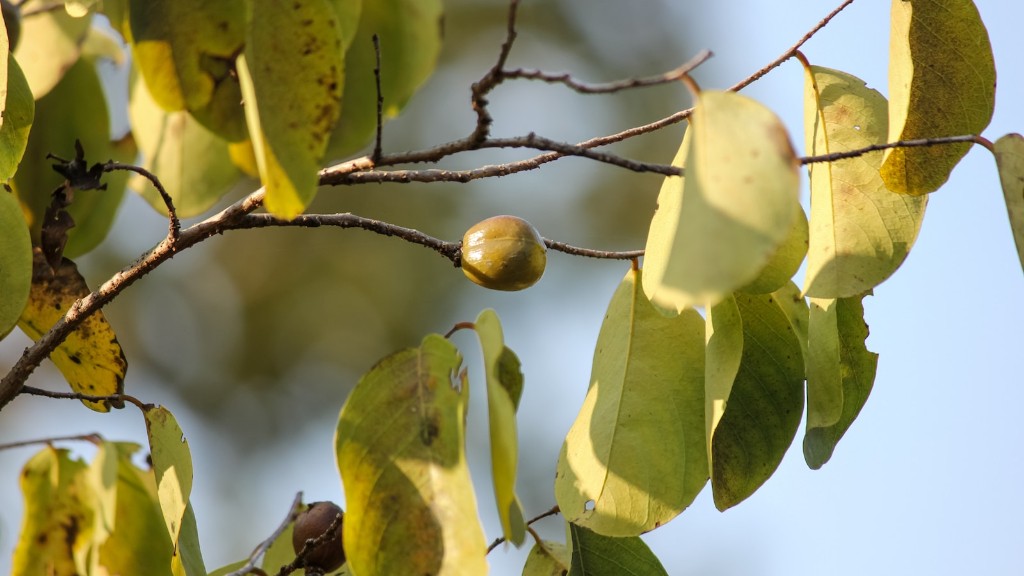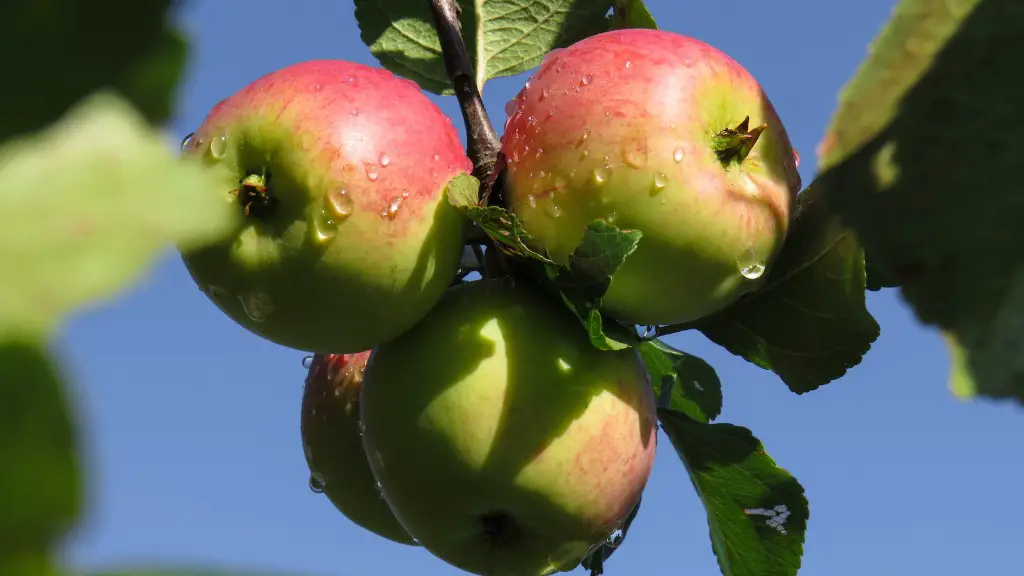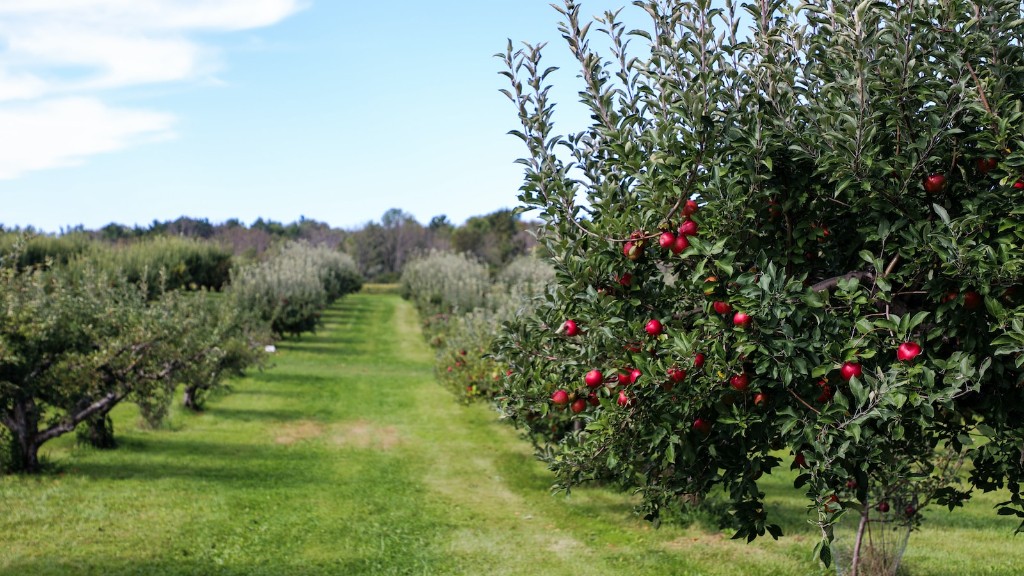A young apple tree looks quite different to a mature one. Its trunk is slimmer and its branches often droop down, soft and pliable. It has a short, lightly feathered crown, often still dotted with leaves, these being its first set. The colour of the bark is darker than a mature tree, as it has not yet been exposed to the elements. The root system is also relatively small and fine – yet strong enough to hold its branches.
There are a few indicators that you can look for to determine whether a tree is young or mature. Firstly, look for surface roots – usually present in a tree that is more than five years old, but rarely do you see any in a sapling. Secondly, check at the base of its trunk; if you observe wrinkles, these are a sign of age. Lastly, examine the branches of the tree; mature trees tend to be more firmly connected to the trunk.
This phase is crucial to the future of the apple tree. It is a time when it needs lots of water, sunlight, and nutrients to ensure successful growth. Pruning during the early stages can help to shape the tree as it grows and keeps the branches healthy by removing dead or excess wood. It is also important to protect a young apple tree from over-watering, excessive wind, mower damages, and pest and disease attacks.
Apple trees germinate from the seed and begin to grow new branches and leaves from the trunk in the first five years of their life. During this period, a growth spurt occurs and the tree may start to bear fruit in the second year. The trunk will thicken and the foliage will grow larger, while the roots will deepen and expand to strengthen the tree. By the fifth year, the young apple tree will be ready to produce its full crop.
Apple Tree Pruning
Pruning early in the life of an apple tree is very important in establishing a strong frame and shape. Pruning is essential for the development of vigorous branch structure and the production of high-quality fruits. It is a technique that should be used regularly to promote healthy growth. During the early stages, one of the main objectives is to create an evenly balanced tree that has a main stem and four to five lateral branches. This will form the basis of a solid skeleton, from which fruit-bearing branches can develop.
The pruning process involves the removal of any dead, broken or diseased branches, along with any those that are growing too close together or in an unhealthy or dangerous direction. The aim is to remove any heavy branches on the lower half of the tree, encouraging growth higher up and making the tree easier to manage. It promotes airflow and reduces the need for light pruning later in life.
Beyond thinning, pruning can also be used to improve the shape of the tree, as well as its size. If a young apple tree is being grown as a central piece in a formal design, then a symmetrical shape can be created to outline it. Trees grown in hedge form can also be pruned to achieve a desired form, while those in an open field form can be limited in size.
Apple Tree Nutrition
Nutrition plays an important role in the health and growth of a young apple tree. By applying fertilizer before the season starts, you can ensure the tree receives key nutrients as it begins to develop. Nutrient deficiency can have strong impacts on the growth and production of the tree, so it is important to perform regular soil tests to ensure it has adequate amounts of potassium, nitrogen, and phosphorus.
In addition to applying fertilizer, pay attention to the pH levels in the soil, as apple trees prefer slightly acidic soil with a pH of around 6.0. Applying compost can help to increase the amount of organic matter in the soil, which is beneficial for the root system. It can also improve the ability of the soil to hold and retain nutrients and water, both of which are key to a healthy tree.
Finally, mulching is another important step when caring for a young apple tree. Mulch helps to retain soil temperature, reduce moisture stress and protect the tree from harmful weeds. It can also act as an insulator and helps to protect against mower damage. A layer of organic matter should be applied around four to six inches deep and two to three feet away from the base of the tree.
Apple Tree Protection
Young apple trees require protection from disease and insects, as these can have severe impacts on the longevity of the tree. Insects such as aphids, mites, and borers can cause damage to the foliage and fruit, as well as posing infection risks to the tree. Inspect the trees on a regular basis and if pests are found, use insect-repelling films or horticultural oils to reduce their presence.
Fungal diseases can have a serious effect on young trees, reducing their growth and fruit production. Preventative measures include keeping the foliage dry, discouraging the presence of molds, and applying fungicides. After rain, inspect the tree for any signs of infection and prune away particularly affected areas.
Finally, take care of a young apple tree by providing adequate water. Apple trees require consistent moisture but are also susceptible to over-watering and flooding. Irrigation systems and mulch can help control water levels and ensure an even and healthy supply.
Apple Tree Training
The early stages of an apple tree’s life are an important time when it comes to training and shaping it as it grows. The objective is to expose the inner leaves and branches of the tree to direct sunlight while also providing enough leaf and stem coverage to support the fruiting process. This includes techniques such as fruit thinning and the removal of non-pregnant spurs. The goal is to create five to seven main scions in the tree with evenly spaced gaps between them.
Staking can also help with the support of a young apple tree and is done by tying the tree to a post or stake in a cordon formation. The stake is secured 35-45 cm away from the trunk and should be at least 1.5 metres above ground level. This will support the tree’s growth and prevent it from toppling over or falling due to high winds.
For those seeking to grow a concentrated crop of apples, planting trees in the espalier formation is the preferred method. This involves shaping the tree branches to fit a two-dimensional fence made up of metal wires or bars. The wires are connected at a 45° angle tilt, allowing for easy access to the fruit and simple maintenance for the tree.
Apple Tree Pollination
Pollination is an essential part of the life cycle of an apple tree and is needed for the tree to produce fruit. For effective pollination, one or two pollinators should be planted within 50 metres of the tree. This ensures that bees, flies and other pollinators can transfer the pollen between trees and guarantee successful fruit production.
If an apple tree is to be grown in an isolated area where it is unable to naturally pollinate with other apple trees, it is possible to hand-pollinate. This involves transferring the pollen from one tree to another using a brush, cotton swab or other similar instrument. This can be done in the morning when the pollen is abundant and before it has the chance to move away from the tree.
Once pollinated, the tree can then produce a full crop of apples, maturing in the autumn after a period of time. With the correct care and maintenance, a young apple tree can become an attractive, edible feature in any garden.




